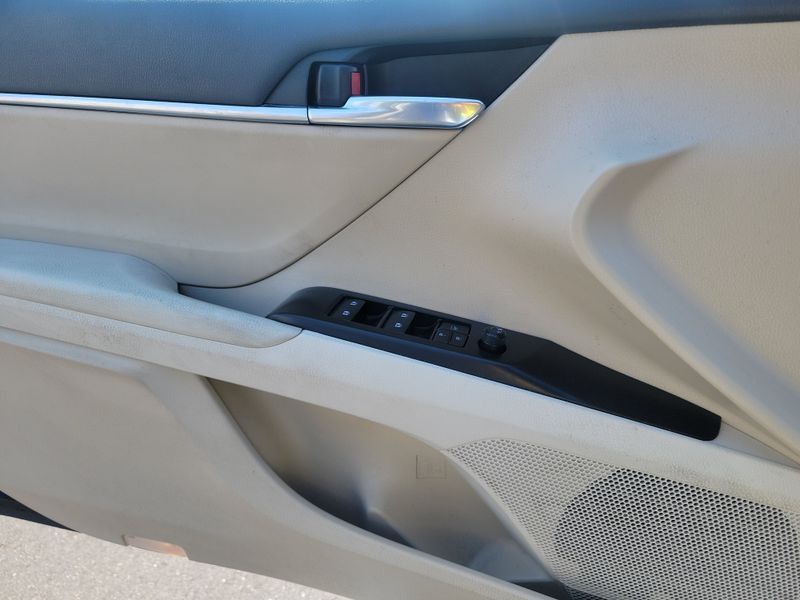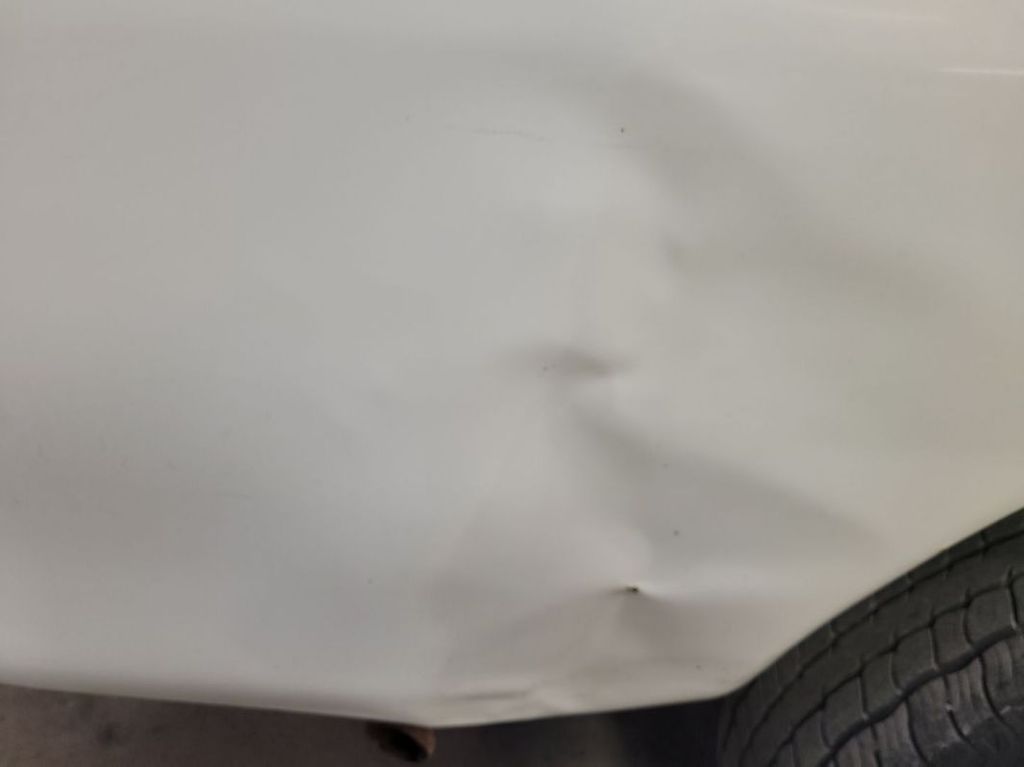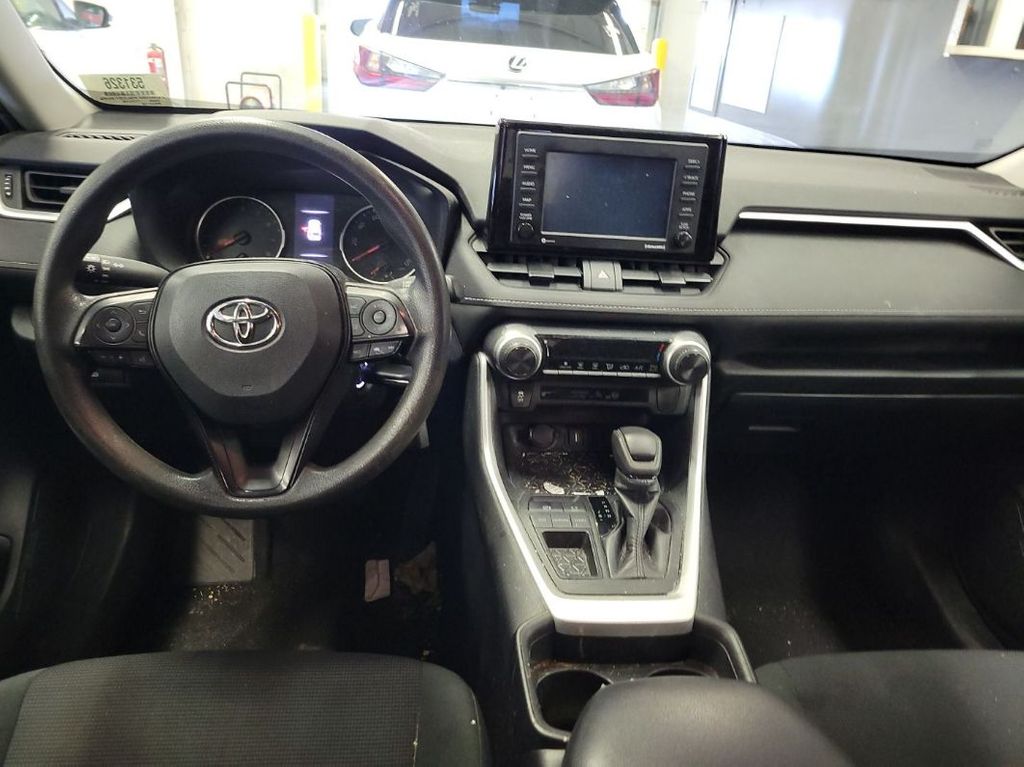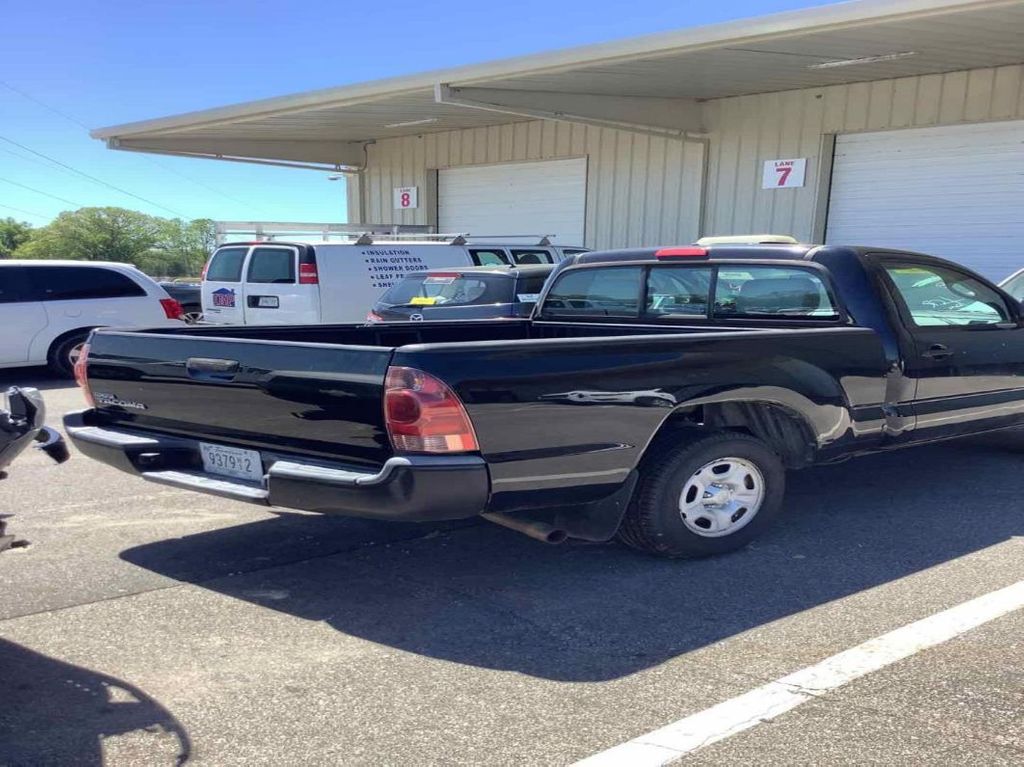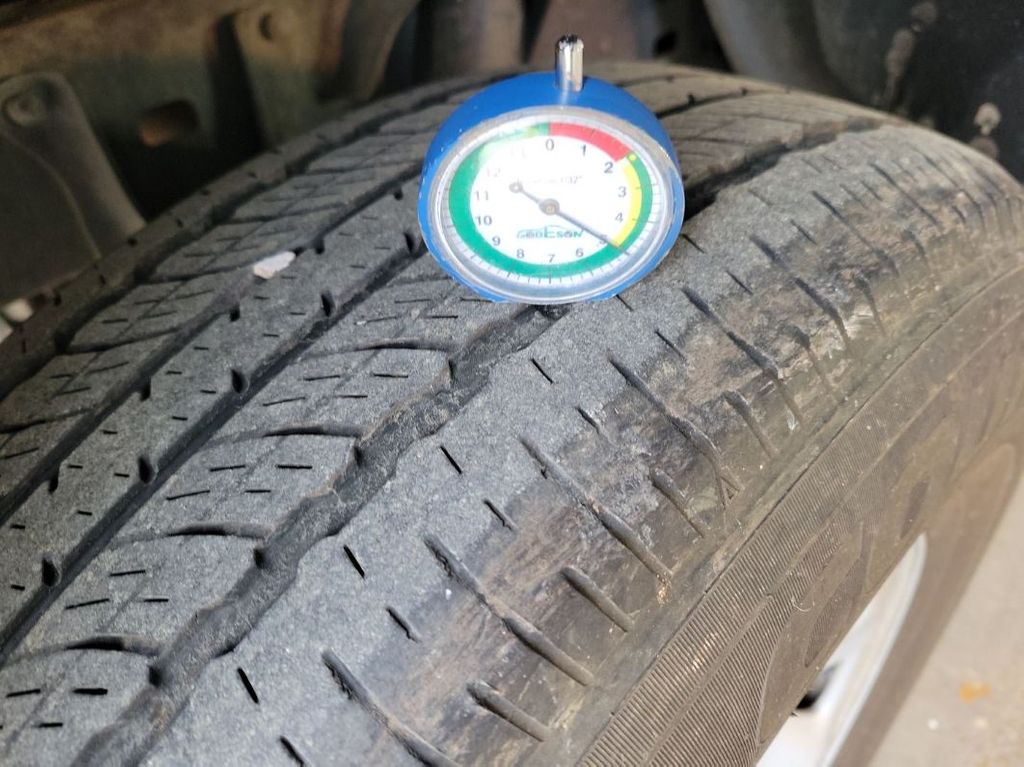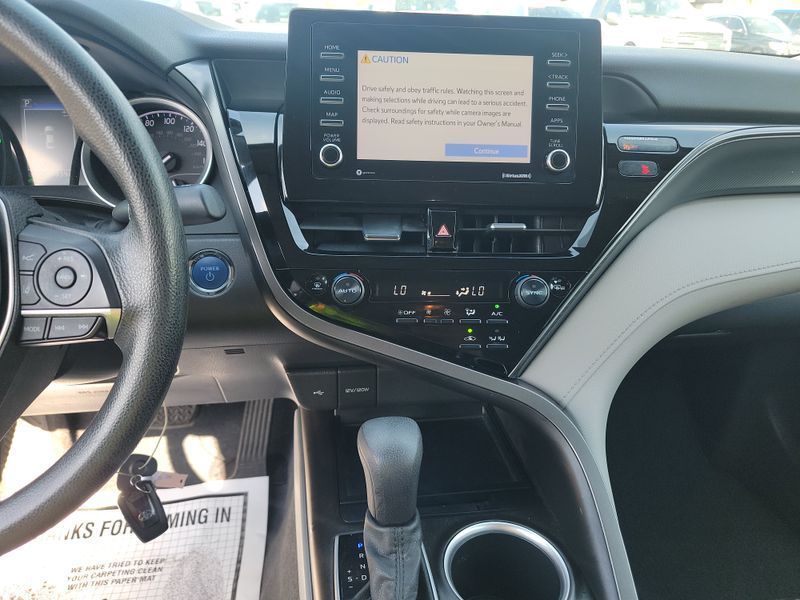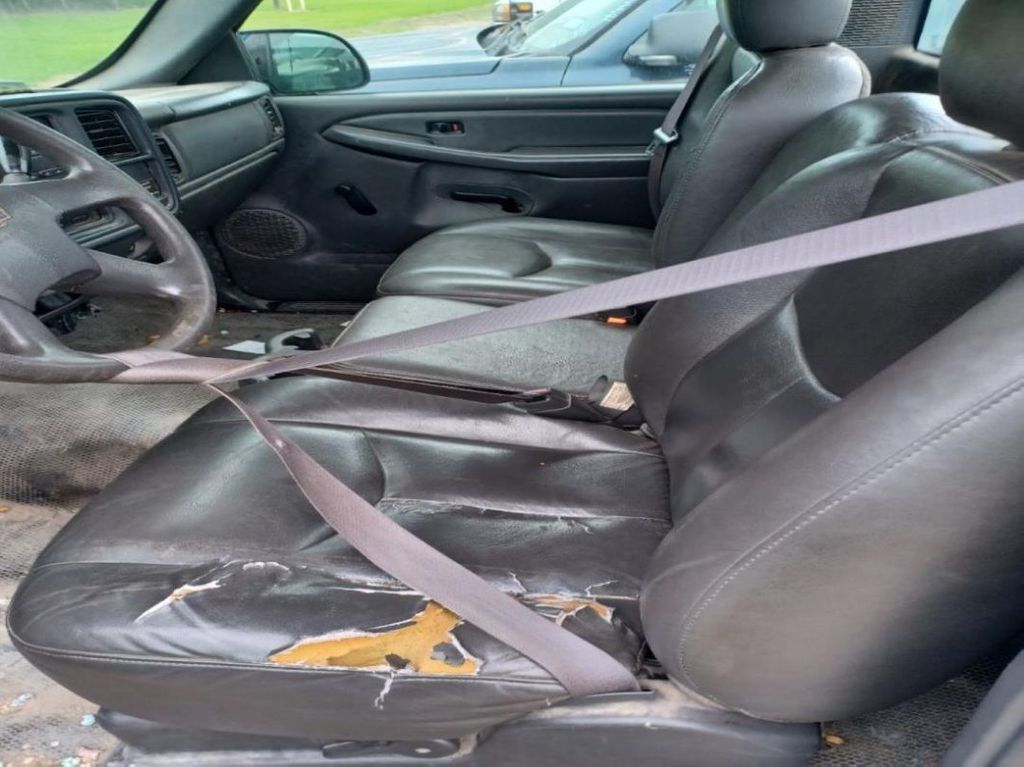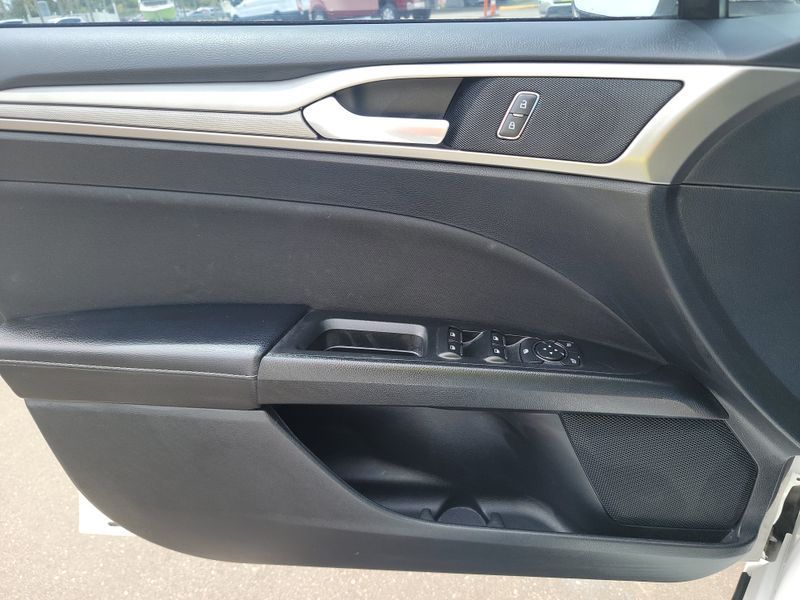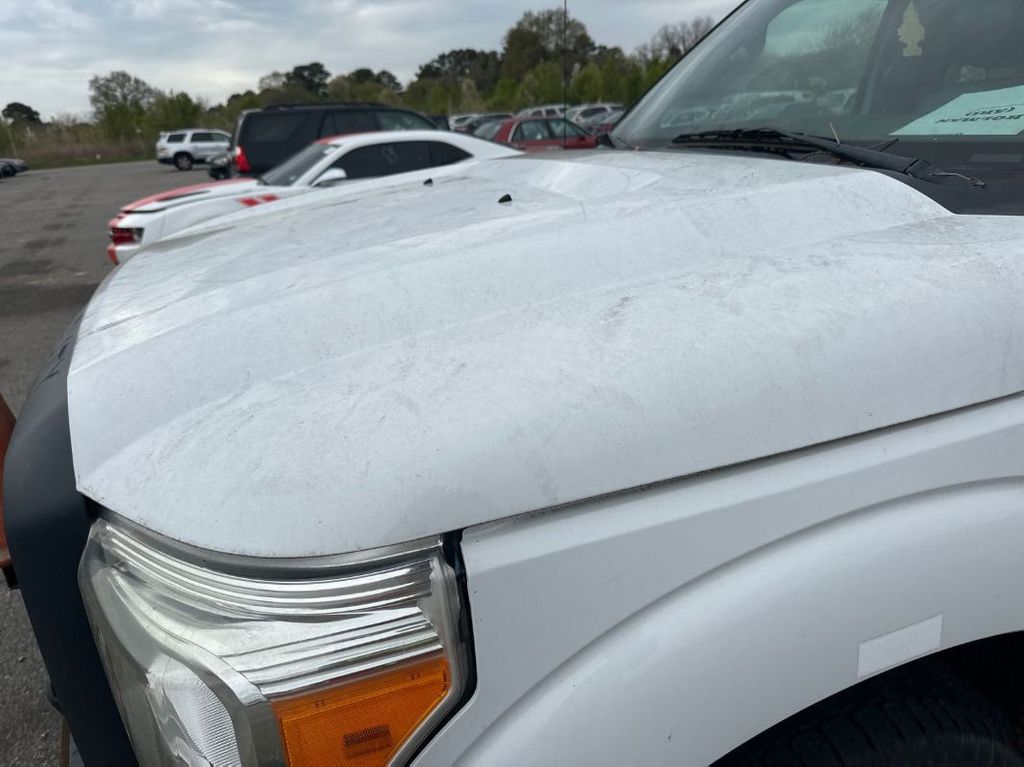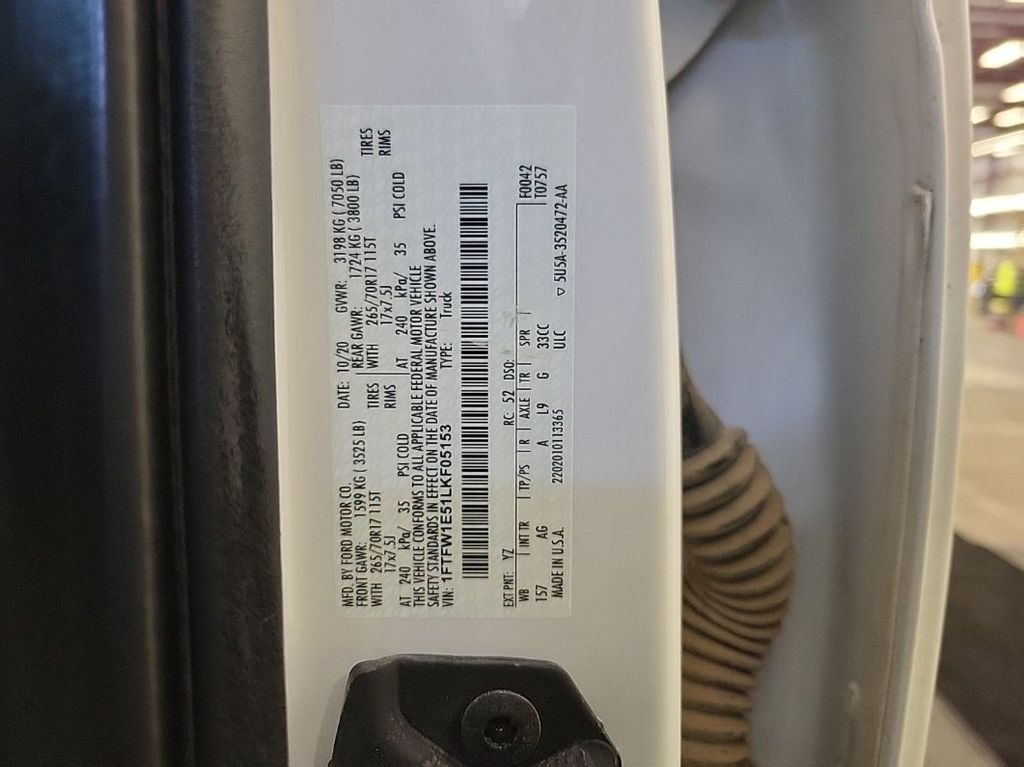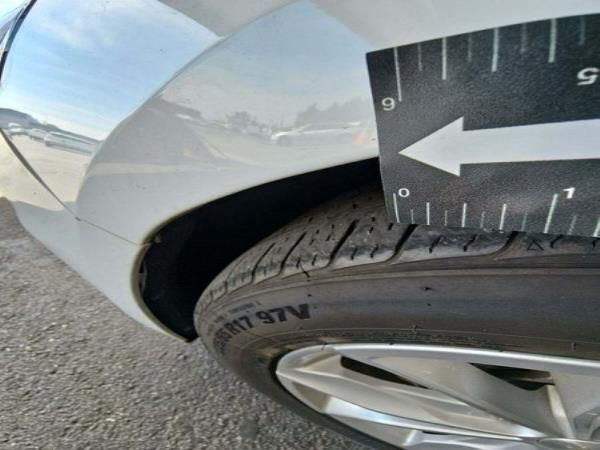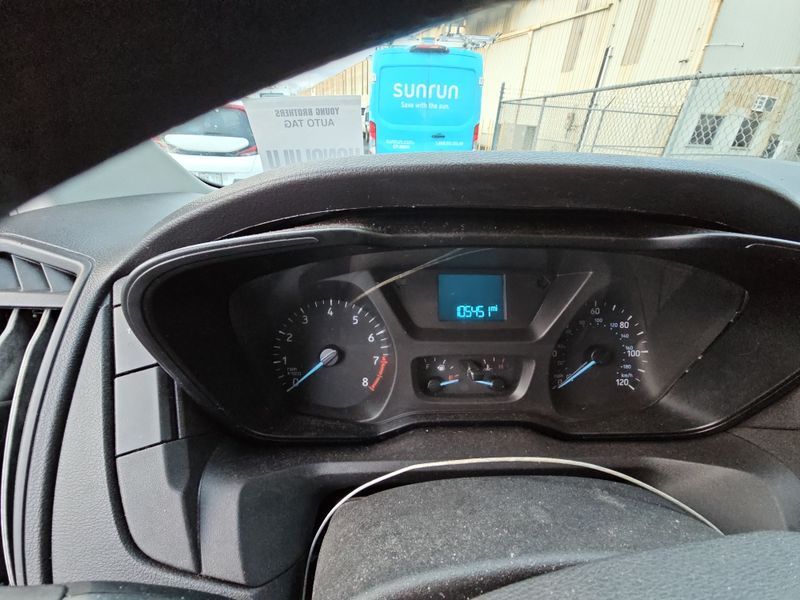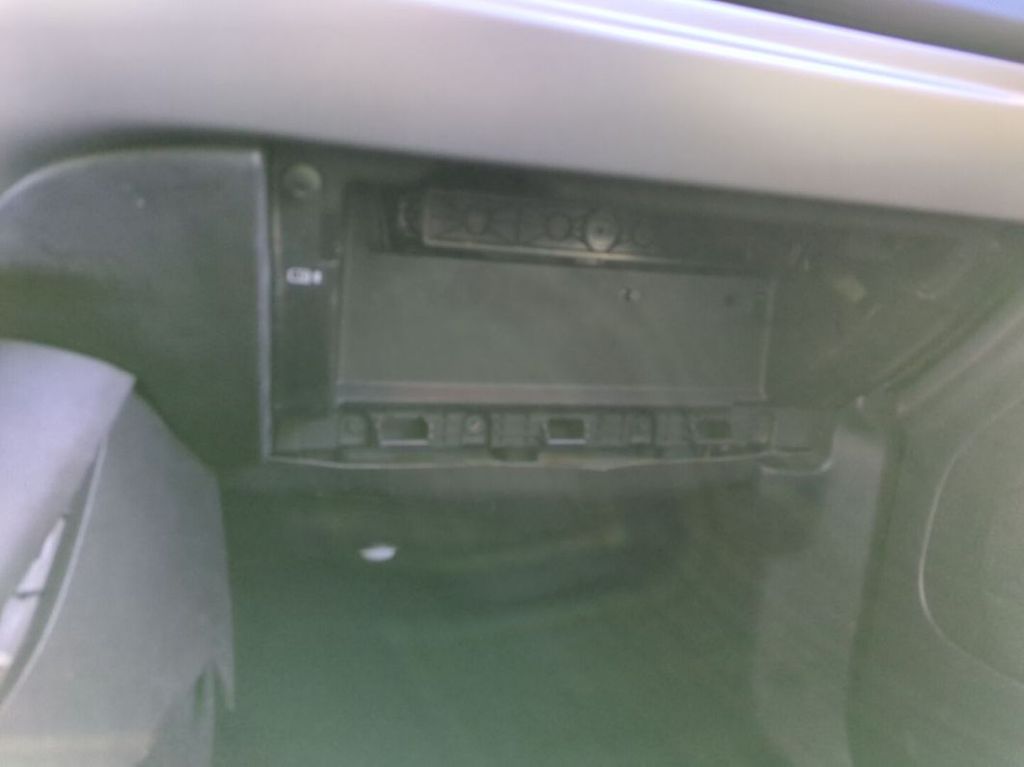💸 Do you have examples of bad vehicles?
- This $31,000 Porsche Panamera Scam Was Drowned And Rolled BackDoes the water actually smell? Another example of a really bad deal.
- 2016 BMW i8 For $35,000: Scam or Score?This luxury BMW has changed not only its color but also odometer value.
- This Nissan Armada Just Keeps Getting Younger...Or Does It?Bought wrecked for $725 with 202k miles, on salvage auction again with 150k miles.
- Title Washing Maserati MoneypitSalvage Grand Turismo with odometer rolled back several times within a few years.
- 2014 JEEP WRANGLERSalvage title with blown airbags. Fully fixed with suspicious odometer.
- 2005 TOYOTA TACOMABought for $4k with 279k miles, cleaned, and on sale for $7k with 96k miles.
- 2005 DODGE MAGNUMTwo salvage auctions within a year. Odometer changed from 232k mi to 118k mi.
- 2005 BMW X3Salvaged several times within a year. Odometer rolled back after the accident.
- 2015 HONDA CROSSTOUROdometer was potentially rolled back from 78k mi to 36k mi.
- 2014 PORSCHE CAYENNE
- 2016 NISSAN SENTRA
All info from Basic Report
Full list of events (better than CARFAX)
Odometer readings from DMV
Save up to $65 on CARFAX and AutoCheck
100% satisfaction guarantee
4 sale reports from different sources
20 actual photos
Odometer readings from sales
Bids and final prices
Real sale descriptions
Not enough reasons to want it? Try to click here.
Why BADVIN is better than other VIN reports?
We give you not only record like a car was at some auction on some date, we give you exact price how much it was sold for, we show you pictures that were used on that auction. So will be able to see how car looked some time ago.
Also we include all events for this VIN, so you will get most of following information:
- Vehicle Specifications
- Title Records and Title Checks
- Junk, Salvage
- Lien, Impound and Theft Records
- Insurance Records
- Owner History, Registered State
- Many other important records
We guarantee that our events list contains all information you need to make a decision about buying the car. If you find our Premium Report not sufficient enough, MONEY BACK GUARANTEED.
Would like to see some examples before purchase? Click here.
- This $31,000 Porsche Panamera Scam Was Drowned And Rolled BackDoes the water actually smell? Another example of a really bad deal.
- 2016 BMW i8 For $35,000: Scam or Score?This luxury BMW has changed not only its color but also odometer value.
- This Nissan Armada Just Keeps Getting Younger...Or Does It?Bought wrecked for $725 with 202k miles, on salvage auction again with 150k miles.
- Title Washing Maserati MoneypitSalvage Grand Turismo with odometer rolled back several times within a few years.
- 2014 JEEP WRANGLERSalvage title with blown airbags. Fully fixed with suspicious odometer.
- 2005 TOYOTA TACOMABought for $4k with 279k miles, cleaned, and on sale for $7k with 96k miles.
- 2005 DODGE MAGNUMTwo salvage auctions within a year. Odometer changed from 232k mi to 118k mi.
- 2005 BMW X3Salvaged several times within a year. Odometer rolled back after the accident.
- 2015 HONDA CROSSTOUROdometer was potentially rolled back from 78k mi to 36k mi.
- 2014 PORSCHE CAYENNE
- 2016 NISSAN SENTRA
If you want to get full information about the car, your best option is Premium Report for $5.99+.
If you need only sale information, your best choice is Basic Report. You won't get detailed list of events but you will get all photos and other data from all sales that we have for this vehicle. Basic reports available only for dealer membership.
Summary for VIN JTDKARFP5H3042656
| Make | TOYOTA |
| Model | PRIUS PRIME |
| Color | Gray |
| Transmission | Automatic |
| Engine | 1.8L I4 FI DOHC 16V NF4 |
| Cylinders | 4 Cyl |
| Drive | Front Wheel Drive |
| Fuel Type | Hybrid |
VIN Decoder — 67 records
Anti-lock Braking System (ABS) means a portion of a service brake system that automatically controls the degree of rotational wheel slip during braking by: (1) Sensing the rate of angular rotation of the wheels; (2) Transmitting signals regarding the rate of wheel angular rotation to one or more controlling devices that interpret those signals and generate responsive controlling output signals; and (3) Transmitting those controlling signals to one or more modulator devices that adjust brake actuating forces in response to those signals.
An auto-reverse system enables power windows and sunroofs on motor vehicles to automatically reverse direction when such power windows and panels detect an obstruction. This feature can prevent children and others from being trapped, injured, or killed by the power windows and sunroofs.
ESC is a computerized technology that improves a vehicle's stability by detecting and reducing loss of traction (skidding). When ESC detects loss of steering control, it automatically applies the brakes to help steer the vehicle in the driver's intended direction. Braking is automatically applied to wheels individually, such as the outer front wheel to counter oversteer, or the inner rear wheel to counter understeer. Some ESC systems also reduce engine power until control is regained.
A keyless ignition system permits starting a car without a physical key being inserted into an ignition. Instead, a small device known as a "key fob" transmits a code to a computer in the vehicle when the fob is within a certain close range. When the coded signal matches the code embedded in the vehicle's computer, a number of systems within the car are activated, including the starter system. This allows the car to be started by simply pressing a button on the dashboard while the key fob is left in a pocket or a purse. The vehicle is usually shut down by pushing the same button.
A TPMS is an electronic system designed to monitor the air pressure inside the pneumatic tires on various types of vehicles. TPMS can be divided into two different types - direct and indirect. Direct TPMS employ pressure sensors on each wheel, either internal or external. The sensors physically measure the tire pressure in each tire and report it to the vehicle's instrument cluster or a corresponding monitor. Indirect TPMS does not use physical pressure sensors but measure air pressures by monitoring individual wheel rotational speeds and other signals available outside of the tire itself.
When the traction control computer detects a driven wheel or wheels spinning significantly faster than another, it invokes an electronic control unit to apply brake friction to wheels spinning due to loss of traction. This braking action on slipping wheels will cause power transfer to the wheels with traction due to the mechanical action within the differential.
A backup camera, also known as a rearview video system, helps prevent back-over crashes and protects our most vulnerable people - children and senior citizens - by providing an image of the area behind the vehicle. A backup camera helps the driver see behind the vehicle while in reverse.
A CIB system is an automatic emergency braking system designed to detect an impending forward crash with another vehicle. CIB systems automatically apply the brakes in a crash imminent situation to slow or stop the vehicle, avoiding the crash or reducing its severity, if the driver does not brake in response to a forward collision alert.
A DBS system is an automatic emergency braking system designed to detect an impending forward crash with another vehicle. DBS systems automatically supplement the driver's braking in an effort to avoid a crash if the driver does not brake hard enough to avoid it.
An FCW system monitors a vehicle's speed, the speed of the vehicle in front of it, and the distance between the vehicles. If the vehicles get too close due to the speed of either vehicle, the FCW system will warn the driver of the rear vehicle of an impending crash so that the driver can apply the brakes or take evasive action, such as steering, to prevent a potential crash. FCW systems provide an audible, visual, or haptic warning, or any combination thereof, to alert the driver of an FCW-equipped vehicle of a potential collision.
An LDW system monitors lane markings and alerts the driver if their vehicle drifts out of their lane without a turn signal or any control input indicating the lane departure is intentional. An audio, visual or other alert warns the driver of the unintentional lane shift so the driver can steer the vehicle back into its lane.
An LKA system prevents a driver from unintentionally drifting out of the intended travel lane. LKA systems use information provided by Lane Departure Warning (LDW) system sensors to determine whether a vehicle is about to unintentionally move out of its lane of travel. If so, LKA activates and corrects the steering, brakes or accelerates one or more wheels, or does both, resulting in the vehicle returning to its intended lane of travel.
DRL is an automotive lighting system on the front of a vehicle or bicycle, that automatically switches on when the vehicle is in drive, and emits white, yellow, or amber light to increase the conspicuity of the vehicle during daylight conditions.
A headlamp light source provides a distribution of light designed to provide adequate forward and lateral illumination with limits on light directed towards the eyes of other road users, to control glare. This beam is intended for use whenever other vehicles are present ahead. Halogen, high-Intensity discharge (HID), light-emitting diode (LED), and laser are the most common headlights on the market.
A semi-automatic headlamp beam switching device provides automatic or manual control of beam switching at the option of the driver. When the control is automatic, the headlamps switch from the upper beam to the lower beam when illuminated by the headlamps on an approaching car and switch back to the upper beam when the road ahead is dark. When the control is manual, the driver may obtain either beam manually regardless of the condition of lights ahead of the vehicle.
Engine displacement (in cubic centimeters) is the volume swept by all the pistons inside the cylinders of a reciprocating engine in a single movement from top dead center to bottom dead center.
Engine displacement (in cubic inches) is the volume swept by all the pistons inside the cylinders of a reciprocating engine in a single movement from top dead center to bottom dead center.
Engine displacement (in liters) is the volume swept by all the pistons inside the cylinders of a reciprocating engine in a single movement from top dead center to bottom dead center.
Electrification level defines to what level the vehicle is powered by electric system. The common electric system configurations are mild hybrid, strong hybrid, plug-in hybrid, battery electric, and fuel cell vehicles.
(1) Mild hybrid is the system such as 12-volt start-stop or 48-volt belt integrator starter generator (BISG) system that uses an electric motor to add assisting power to the internal combustion engine. The system has features such as stop-start, power assist, and mild level of generative braking features.
(2) Strong hybrid systems, in vehicles such as the Toyota Prius, mainly consist of motors, conventional gasoline engine, and battery, but the source of electrical charge for the battery power is provided by the conventional engine and/or regenerative braking.
(3) Plug-in hybrid systems, in vehicles such as the Toyota Rav4 Prime, mainly consist of motors, conventional gasoline engine and battery. Plug-in hybrid vehicles are like strong hybrids, but they have a larger battery pack and can be charged with an external source of electricity by electric vehicle supply equipment (EVSE).
(4) Battery electric vehicles (BEV), such as the Tesla Model S or Nissan Leaf, have only a battery and electrical motor components and use electricity as the only power source.
(5) Fuel cell electric vehicles (FCEV) use full electric drive platforms but consume electricity generated by onboard fuel cells and hydrogen fuel.
Engine brake is the horsepower (hp) at the engine output shaft. Engine Brake (hp) From is the lower value of the range.
Engine configuration defines how engine cylinders are arranged. Common values are V6 for V-shaped arrangement, I4 or L4 for in-line arrangement.
This is a numerical field to store the number of cylinders in an engine. Common values for passenger cars are 4 or 6.
Fuel type defines the fuel used to power the vehicle. For vehicles that have two power sources, such as plug-in hybrid vehicle, both primary fuel type and secondary fuel type will be provided.
Body Class presents the body type based on 49 CFR 565.12(b): "Body type means the general configuration or shape of a vehicle distinguished by such characteristics as the number of doors or windows, cargo-carrying features and the roofline (e.g., sedan, fastback, hatchback)." Definitions are not provided for individual body types in the regulation.
Curb weight (in pounds) is the total weight of a vehicle with standard equipment, all necessary operating consumables such as motor oil, transmission oil, coolant, air conditioning refrigerant, and a full tank of fuel, while not loaded with either passengers or cargo.
Gross vehicle weight rating (GVWR) is the maximum operating weight of a vehicle including the vehicle's chassis, body, engine, engine fluids, fuel, accessories, driver, passengers and cargo, but excluding that of the trailers. Per 49 CFR 565.15, Class 1 is further broken down to Class A-D; Class 2 is further broken down to Class E-H. This field captures the lower bound of GVWR range for the vehicle.
Gross vehicle weight rating (GVWR) is the maximum operating weight of a vehicle including the vehicle's chassis, body, engine, engine fluids, fuel, accessories, driver, passengers and cargo, but excluding that of the trailers. Per 49 CFR 565.15, Class 1 is further broken down to Class A-D; Class 2 is further broken down to Class E-H. This field captures the higher bound of GVWR range for the vehicle.
Per 49 CFR 565, Model means a name that a manufacturer applies to a family of vehicles of the same type, make, line, series and body type.
If the model year (MY) is supplied when the VIN is decoded, such as from a crash report or a vehicle registration record, the MY value will be the supplied MY, even if the MY decoded from the VIN differs from the supplied MY. If the MY is not supplied when the VIN is decoded, the MY value will be decoded from the 10th character in the VIN.
This data element captures the name of the company that owns the manufacturing plant where the manufacturer affixes the VIN.
This data element captures the country of the manufacturing plant where the manufacturer affixes the VIN.
This data element captures the State or Province name within the Plant Country of the manufacturing plant where the manufacturer affixes the VIN.
Per 49 CFR 565, Series means a name that a manufacturer applies to a subdivision of a "line" denoting price, size or weight identification and that is used by the manufacturer for marketing purposes.
Battery Energy (kWh) From field stores the lower bound of battery energy range in the unit of kilowatt-hour (kWh).
Battery Energy (kWh) To field stores the upper bound of battery energy range in the unit of kilowatt-hour (kWh).
There are three levels of battery chargers currently. Level 1 and 2 are AC chargers; Level 3 is a DC charger. Chargers at each level charge batteries with different voltage and current levels. Level 3 is the fastest charging.
-Level 1
- AC charger.
- In North America this typically means 16 amps at 120 volts delivering 1.9 kW of power.
- In Europe it may be 13 or 16 amps at 240 volts delivering 3 kW of power.
- The EV may incorporate a standard domestic power cord to connect the vehicle to a domestic socket outlet or a Level 1 charging station.
-Level 2
- AC charger.
- It delivers up to 20 kW of power from either single- or three-phase alternating current (AC) sources of 208-240 volts at up to 80 amps.
-Level 3
- DC charging, or "fast charging."
- To achieve very short charging times, Level 3 chargers supply very high currents of up to 400 amps at voltages up to 600 volts DC delivering a maximum power of 240 kW.
This field captures the location of curtain air bags. Curtain air bags are side air bags that protect the head.
This field captures the location of frontal air bags. Frontal air bags are generally designed to deploy in "moderate to severe" frontal or near-frontal crashes.
This field captures the location of knee air bags, which deploy from a car's lower dashboard, are meant to distribute impact forces on an occupant's legs in the case of a crash, thereby reducing leg injuries.
BADVIN Premium Report

Sale Record — 5 years ago in Anaheim, CA, 92804
| Year | 2017 |
| Title | Hidden text |
| ODO | 1522 mi (Hidden text) |
| Loss | Hidden text |
| Damage | Hidden text |
| Estimated Retail Value | $2712 |
| Seller | Hidden text |
| Location | Anaheim, CA, 92804 |
| Date | ended 5 years ago sold for $5502 |
| Sale Website Type | salvage or insurance auction |
Tech Specs
| Color | Gray |
| Transmission | Automatic |
| Engine | 1.8L I4 FI DOHC 16V NF4 |
| Cylinders | 4 Cyl |
| Drive | Front Wheel Drive |
| Fuel Type | Hybrid |
Photos
All photos below are REAL and display ACTUAL car. After you get the report you will see full resolution photos.



Sale Record — 5 years ago in Anaheim, CA, 92804
| Year | 2017 |
| Title | Hidden text |
| ODO | 5416 mi (Hidden text) |
| Loss | Hidden text |
| Damage | Hidden text |
| Estimated Retail Value | $7992 |
| Seller | Hidden text |
| Location | Anaheim, CA, 92804 |
| Date | ended 5 years ago sold for $2734 |
| Sale Website Type | salvage or insurance auction |
Tech Specs
| Color | Gray |
| Transmission | Automatic |
| Engine | 1.8L I4 FI DOHC 16V NF4 |
| Cylinders | 4 Cyl |
| Drive | Front Wheel Drive |
| Fuel Type | Hybrid |
Photos
All photos below are REAL and display ACTUAL car. After you get the report you will see full resolution photos.



VIN Decoder
Vehicle Equipment
Air Bag - Frontal
- Driver Air Bag
- Hidden text
- Passenger Air Bag
- Hidden text
Air Bag - Side
- Front Head Air Bag
- Hidden text
- Rear Head Air Bag
- Hidden text
Air Conditioning
- A/C
- Hidden text
Audio
- AM/FM Stereo
- Hidden text
- HD Radio
- Hidden text
- Satellite Radio
- Hidden text
Brakes
- 4-Wheel Disc Brakes
- Hidden text
Convenience
- Adaptive Cruise Control
- Hidden text
- Automatic Headlights
- Hidden text
- Cargo Shade
- Hidden text
- Engine Immobilizer
- Hidden text
- Keyless Start
- Hidden text
- Steering Wheel Audio Controls
- Hidden text
- Variable Speed Intermittent Wipers
Drivetrain
- Front Wheel Drive
Engine
- 4 Cylinder Engine
Fuel
- Plug-In Electric/Gas
Locks
- Keyless Entry
- Hidden text
Mirrors
- Driver Illuminated Vanity Mirror
- Hidden text
- Heated Mirrors
- Hidden text
- Passenger Vanity Mirror
- Hidden text
Safety Features
- Brake Assist
- Hidden text
- Daytime Running Lights
- Hidden text
- Lane Keeping Assist
- Hidden text
- Traction Control
Seats
- Bucket Seats
- Hidden text
- Pass-Through Rear Seat
- Hidden text
Steering
- Power Steering
Telephone
- Bluetooth Connection
Tire - Front
- Tires - Front All-Season
Tire - Rear
- Tires - Rear All-Season
Tires
- Tire Pressure Monitor
Transmission
- A/T
- Hidden text
Wheels
- Aluminum Wheels
Window
- Power Windows
- Hidden text
Equipment Details
MECHANICAL
- 11.3 Gal. Fuel Tank
- 9519
- Battery w/Run Down Protection
- Hidden text
- Electric Power-Assist Steering
- Hidden text
- Engine: 1.8L 4-Cylinder DOHC 16V VVT-i
- Hidden text
- Front-Wheel Drive
- Hidden text
- Hybrid Electric Motor
- Hidden text
- Regenerative 4-Wheel Disc Brakes w/4-Wheel ABS, Front Vented Discs, Brake Assist and Hill Hold Control
- Hidden text
- Strut Front Suspension w/Coil Springs
- Hidden text
EXTERIOR
- Black Grille
- Hidden text
- Body-Colored Door Handles
- Hidden text
- Body-Colored Power Heated Side Mirrors w/Manual Folding
- Hidden text
- Clearcoat Paint
- Hidden text
- Galvanized Steel/Aluminum/Composite Panels
- Hidden text
- LED Brakelights
- Hidden text
- Light Tinted Glass
- Hidden text
- Tires: P195/65R15 AS
INTERIOR
- 2 12V DC Power Outlets
- 4287
- 60-40 Folding Split-Bench Front Facing Fold Forward Seatback Rear Seat
- Hidden text
- Automatic Air Conditioning w/Steering Wheel Controls
- Hidden text
- Cargo Features -inc: Spare Tire Mobility Kit
- Hidden text
- Carpet Floor Trim
- Hidden text
- Delayed Accessory Power
- Hidden text
- Distance Pacing
- Hidden text
- Driver And Passenger Visor Vanity Mirrors w/Driver And Passenger Illumination
- Hidden text
- Driver Seat
- Hidden text
- Fade-To-Off Interior Lighting
- Hidden text
- Front Cupholder
- Hidden text
- Full Carpet Floor Covering
- Hidden text
- Full Floor Console w/Covered Storage, Mini Overhead Console w/Storage, Rear Console w/Storage and 2 12V DC Power Outlets
- Hidden text
- Illuminated Glove Box
- Hidden text
- Leatherette Door Trim Insert
- Hidden text
- Manual Tilt/Telescoping Steering Column
- Hidden text
- Outside Temp Gauge
- Hidden text
- Rear Cupholder
- Hidden text
- Roll-Up Cargo Cover
- Hidden text
SAFETY
- Airbag Occupancy Sensor
- Hidden text
- Curtain 1st And 2nd Row Airbags
- Hidden text
- Dual Stage Driver And Passenger Front Airbags
- Hidden text
- Low Tire Pressure Warning
- Hidden text
- Rear Child Safety Locks
- Hidden text
ENTERTAINMENT
- 3 LCD Monitors In The Front
- Hidden text
- Window Grid And Roof Mount Antenna
Chassis
Brakes
- Brake ABS System - 4-Wheel
- Hidden text
- Disc - Front (Yes or ) - Yes
- Hidden text
- Front Brake Rotor Diam x Thickness - 10 in
- Hidden text
Fuel Tank
- Fuel Tank Capacity, Approx - 11.3 gal
Steering
- Steering Type - Rack-Pinion
- Hidden text
Suspension
- Suspension Type - Front - Strut
- Hidden text
- Suspension Type - Rear - Double Wishbone
- Hidden text
Tires
- Front Tire Size - P195/65SR15
- Hidden text
Weight Information
- Base Curb Weight - lbs
Wheels
- Front Wheel Material - Aluminum
- Hidden text
- Rear Wheel Material - Aluminum
- Hidden text
Dimensions
Cargo Area Dimensions
- Cargo Volume with Rear Seat Up - 19.8 ft³
Exterior Dimensions
- Height, Overall - 57.9 in
- Hidden text
- Min Ground Clearance - 4.8 in
- Hidden text
- Track Width, Rear - 60.6 in
- Hidden text
- Width, Max w/o mirrors - 69.3 in
Interior Dimensions
- Front Head Room - 39.4 in
- Hidden text
- Front Leg Room - 43.2 in
- Hidden text
- Passenger Capacity - 4
- Hidden text
- Second Head Room - 37.2 in
- Hidden text
- Second Leg Room - 33.4 in
- Hidden text
Powertrain
Engine
- Displacement - 1.8 L/110
- Hidden text
- Engine Camshaft - DOHC
- Hidden text
- Engine Cylinder Count - 4
- Hidden text
- Engine Displacement Units - 1.8
- Hidden text
- Engine Valve Count -
- Hidden text
- Fuel System - Sequential MPI
- Hidden text
- SAE Net Torque @ RPM - 105 @ 3600
Mileage
- Battery Range - 25 mi
- Hidden text
Transmission
- Drivetrain - Front Wheel Drive
- Hidden text
- Trans Description Cont. - CVT w/OD
- Hidden text
Summary
Summary
- Body Style - Hatchback
- Hidden text
Vehicle
Vehicle
- Country of Origin - Japan Reserved
- Hidden text
Other vehicles sales records







